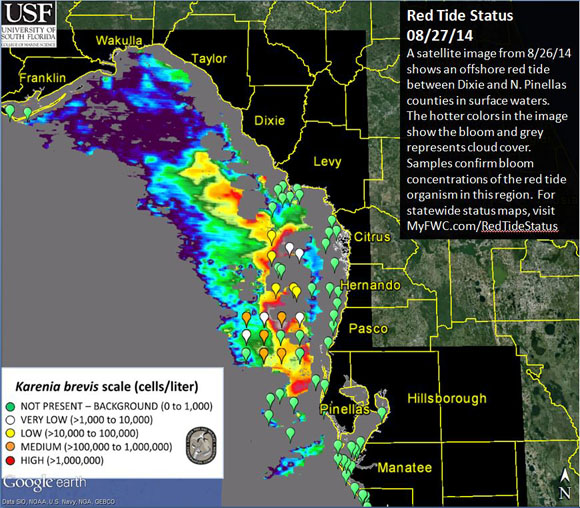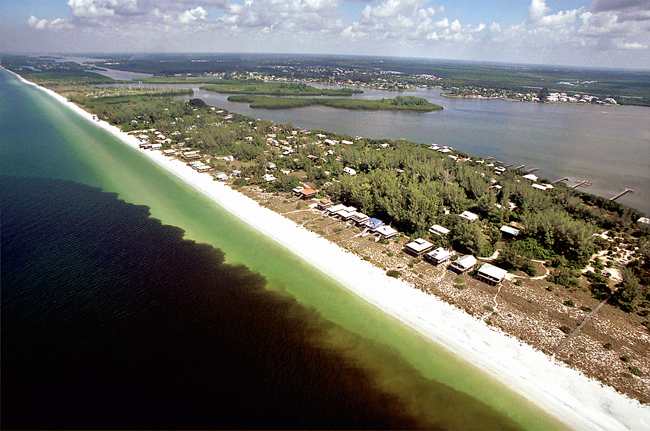The results of a long-term research project, sponsored by NOAA’s National Centers for Coastal Ocean Science, focused on the Gulf of Mexico red tide are featured in a special issue of the scientific journal Harmful Algae. History records blooms of the harmful Florida red tide (caused by the microalgal dinoflagellate Karenia brevis) occurring centuries before Florida’s mid-late twentieth century coastal population boom. Yet most Floridians associate these blooms with coastal nutrient pollution. Researchers addressed what nutrient sources were available for these blooms, their relation to coastal nutrient pollution, and why they are such a problem for the southeast Florida coastal regions.
Contrasting with the many harmful algal blooms (HABs) which are linked to coastal nutrient pollution, scientists find no direct link between nutrient pollution and the initiation of red tide, or the frequency or severity of red tides caused by K. brevis. Florida red tides generally develop 10-40 miles offshore on the southwest Florida shelf, away from coastal nutrient pollution, and are transported by physical currents inshore where they are capable of using multiple nutrient sources, including coastal runoff, for growth.

The Karenia red tide research project in the Gulf of Mexico, led by the Florida Fish and Wildlife Commission Fish and Wildlife Research Institute, partnered with the University of Miami, Old Dominion University, University of Maryland ,Mote Marine Laboratory & Aquarium, College of William and Mary, and University of South Florida, found nutrient sources supporting Florida red tides are numerous and chemically complex, and vary with bloom stage, location, cell concentration and bloom toxicity. K. brevisis also physiologically flexible in acquiring nutrients, ingesting other small single celled phytoplankton and bacteria as well as taking up both simple and complex forms of dissolved nitrogen and phosphorus.
Red tide blooms occur across a wide range of habitats from offshore to inshore, typically originating offshore. The largest source of nitrogen for the initiation of blooms offshore is derived from the nitrogen gas-fixing marine cyanobacterium (blue-green alga) Trichodesmium. Secondary are nutrients released by grazing zooplankton and dead fish. Blooms can travel inshore and into estuaries, where they acquire nutrients fluxing from bottom sediments and coastal runoff–significant in supporting small, localized, nearshore blooms. Many of these nutrient sources alone were sufficient to support observed small and medium sized coastal blooms.

Effective K. brevis HAB management is complicated by the lack of integrated understanding of how different nutrient sources and forms interact with the physical environment to regulate these blooms. This project provides the data necessary to inform management recommendations on controllable nutrient sources and develop improved forecasting models. Specific management recommendations include:
- Maximize efforts to reduce potentially controllable nutrient inputs and sources that contribute to K. brevis blooms.
- Include monitoring for known physical conditions that favor/disfavor the initiation, transport and export of K. brevis blooms in the southwest Florida region in HAB monitoring efforts at both state and federal levels.
- Identify and provide funding necessary to maintain the southwest Florida coastal observing system infrastructure on an operational basis.
Results of this project, part of the NCCOS Ecology and Oceanography of Harmful Algal Blooms Program (ECOHAB ), are assembled in a special issue of the journal Harmful Algae.
For more information, contact Quay.Dortch@noaa.gov.
